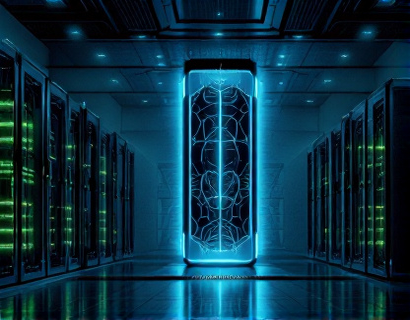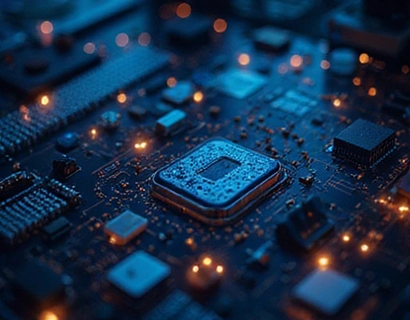Blockchain-Enabled Registry Software: Revolutionizing Data Management
In the rapidly evolving landscape of data management, the integration of blockchain technology has emerged as a transformative force, offering unprecedented levels of security, transparency, and efficiency. This article delves into the realm of blockchain-enabled registry software, exploring how it is revolutionizing the way professionals and enthusiasts approach data management, security, and digital transformation. By leveraging the inherent properties of blockchain, such as decentralization, immutability, and cryptographic security, this innovative software is redefining the standards for registry management.
Understanding Blockchain Technology
Before diving into the specifics of blockchain-enabled registry software, it is essential to grasp the fundamental concepts of blockchain technology. At its core, a blockchain is a distributed ledger that records transactions across multiple computers in such a way that the registered transactions cannot be altered retroactively. This technology ensures that once data is recorded, it becomes nearly impossible to modify or delete, providing a high level of data integrity and trust.
Blockchain operates on a peer-to-peer network, where each participant, or node, maintains a copy of the entire ledger. Transactions are grouped into blocks, and each block is linked to the previous one through cryptographic hashes, forming a chain. This linkage ensures that any attempt to alter a block would require changing all subsequent blocks, a task that is computationally infeasible due to the consensus mechanisms in place.
Enhanced Security through Blockchain
One of the most significant advantages of blockchain-enabled registry software is its enhanced security features. Traditional registry systems are often centralized, making them vulnerable to cyber attacks, data breaches, and unauthorized access. In contrast, blockchain's decentralized nature distributes the data across a network of nodes, eliminating single points of failure and reducing the risk of security breaches.
Each transaction in a blockchain is encrypted and verified through complex algorithms, ensuring that only authorized parties can access or modify the data. This cryptographic security not only protects the integrity of the data but also ensures compliance with regulatory standards, making it an ideal solution for industries that handle sensitive information such as healthcare, finance, and government.
Transparency and Traceability
Transparency is another cornerstone of blockchain technology, and it plays a crucial role in enhancing the trustworthiness of registry management. In a blockchain-based system, all transactions are recorded in a public ledger that is accessible to all participants. This transparency allows for real-time tracking and verification of data, reducing the potential for fraud and errors.
For instance, in supply chain management, blockchain can provide end-to-end visibility, enabling stakeholders to trace the origin and journey of products. This level of traceability not only ensures authenticity but also helps in quickly identifying and addressing any issues that may arise, thereby improving overall efficiency and customer satisfaction.
Efficiency and Automation
Blockchain-enabled registry software not only enhances security and transparency but also significantly improves operational efficiency. Smart contracts, self-executing contracts with the terms directly written into code, automate routine tasks and reduce the need for intermediaries. This automation streamlines processes, reduces manual errors, and accelerates transaction times.
For example, in property registry management, smart contracts can automate the transfer of ownership once certain conditions are met, such as the payment of taxes and fees. This not only speeds up the process but also reduces the administrative burden on both the registry authorities and the property owners.
Case Studies and Real-World Applications
The potential of blockchain-enabled registry software is being realized across various sectors. In the realm of land registry, countries like Estonia have implemented blockchain-based systems to secure property records, reducing the risk of fraud and enhancing access to property information. The Estonian government's e-Residency program leverages blockchain to provide secure and transparent services to residents and businesses worldwide.
In the healthcare industry, blockchain-enabled patient records ensure that medical information is securely stored and easily accessible to authorized healthcare providers. This not only improves patient care but also ensures compliance with data protection regulations such as GDPR.
Another notable application is in the domain of intellectual property management. Blockchain can provide a tamper-proof record of patents, copyrights, and trademarks, simplifying the process of verification and reducing disputes. This transparency and security are invaluable for creators and businesses looking to protect their intellectual assets.
Challenges and Considerations
While the benefits of blockchain-enabled registry software are clear, there are several challenges and considerations that organizations must address. One of the primary concerns is scalability. Blockchain networks, especially public ones, can face performance issues as the volume of transactions increases. However, advancements in blockchain technology, such as sharding and layer 2 solutions, are addressing these scalability concerns.
Another consideration is the regulatory landscape. As blockchain technology is still relatively new, regulatory frameworks are evolving. Organizations must stay informed about local and international regulations to ensure compliance. Additionally, the integration of blockchain with existing systems requires careful planning and expertise to avoid disruptions and ensure seamless operation.
Future Trends and Innovations
The future of blockchain-enabled registry software looks promising, with ongoing innovations set to further enhance its capabilities. Interoperability between different blockchain platforms is becoming a focal point, allowing for more seamless integration and collaboration across various systems. This interoperability will enable organizations to leverage the strengths of multiple blockchain networks, creating a more robust and versatile data management ecosystem.
Furthermore, the integration of artificial intelligence and machine learning with blockchain can lead to smarter and more autonomous registry systems. These technologies can analyze data patterns, predict potential issues, and optimize processes in real-time, taking registry management to new heights of efficiency and intelligence.
Conclusion
Blockchain-enabled registry software represents a significant leap forward in data management, offering enhanced security, transparency, and efficiency. By embracing this technology, organizations can build trust, streamline processes, and stay ahead in a competitive landscape. As the technology continues to evolve, the potential applications and benefits will only grow, making it an essential tool for professionals and enthusiasts in the fields of data management, security, and digital transformation.










































